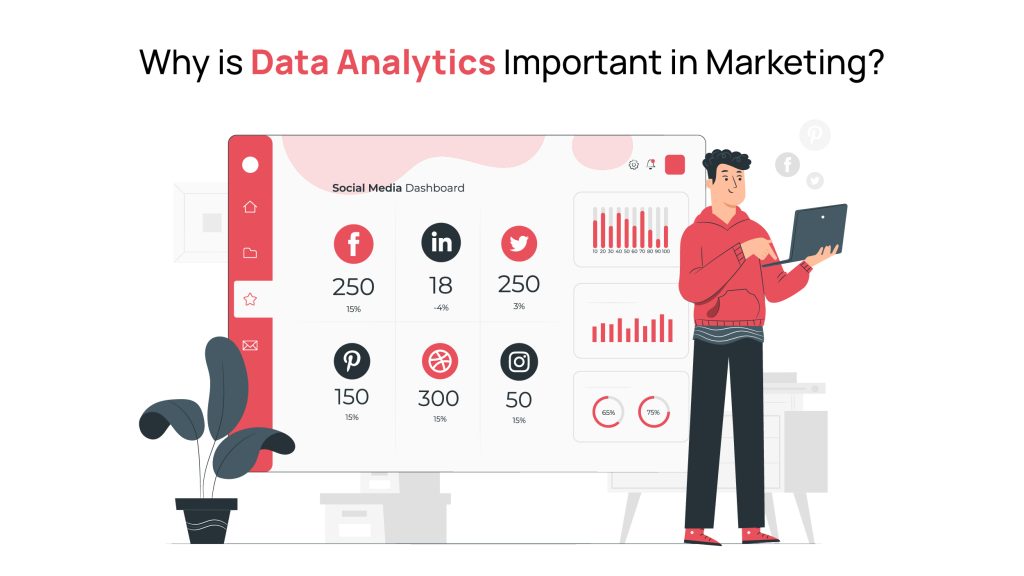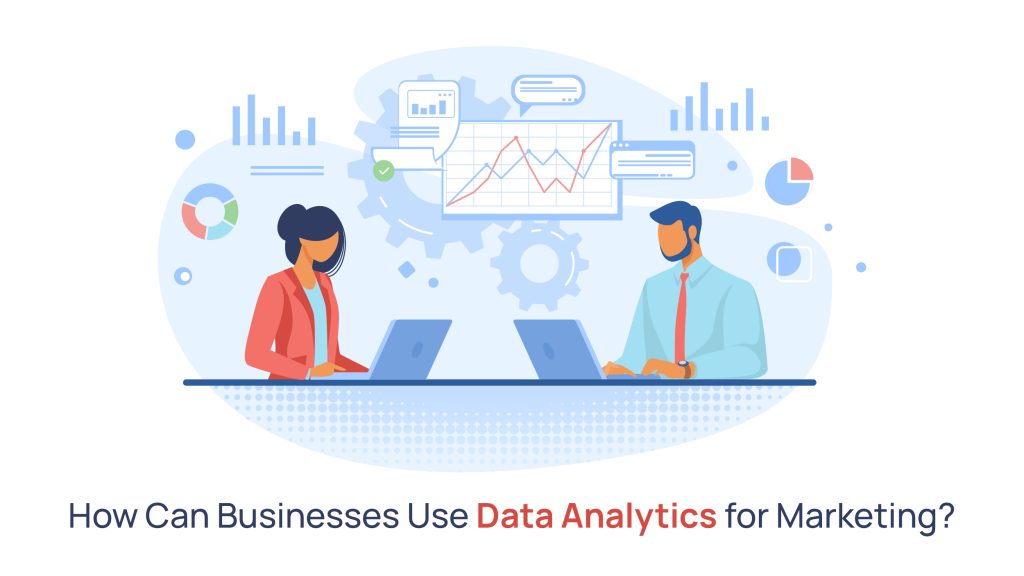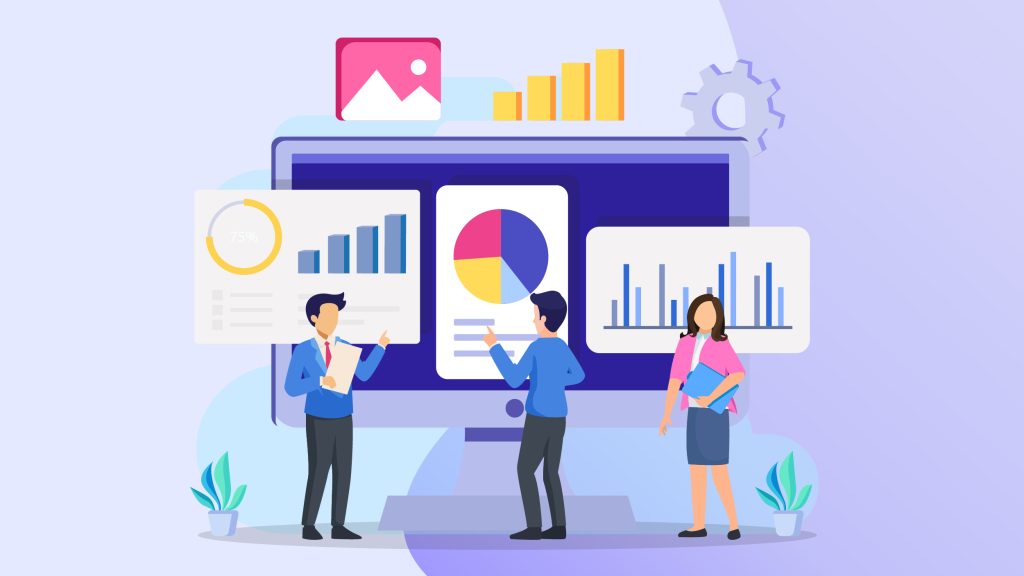Data analytics is becoming increasingly important in the world of marketing, as businesses are realizing the significant benefits of leveraging data to make informed decisions about their marketing strategies. Data analytics involves the process of collecting and analyzing data to gain insights that can be used to improve business operations, and in the case of marketing, to create more effective campaigns that resonate with target audiences.
Data analytics is the process of examining large sets of data to identify patterns, trends, and insights. It has become increasingly important in today’s data-driven world, where businesses and organizations rely on data to make informed decisions. In this article, we will explore the basics of data analytics, its applications, and the tools and techniques used to perform it.
It involves collecting, processing, and analyzing large volumes of data to uncover patterns, trends, and insights that can be used to make better decisions. It involves using statistical and computational techniques to explore and interpret data, and to identify relationships and correlations between different variables.
In this article, we will explore the importance of data analytics in marketing and how businesses can use data to optimize their marketing strategies.
Why is Data Analytics Important in Marketing?
The use of data analytics in marketing provides several benefits, including:
Understanding Your Customers
By analyzing data on customer behavior, preferences, and demographics, businesses can gain a deeper understanding of their target audience. This knowledge can then be used to create more personalized marketing campaigns that are more likely to resonate with customers and drive conversions.
Identifying Trends
By analyzing data on industry trends, businesses can stay ahead of the curve and anticipate changes in the market. This can help businesses make informed decisions about their marketing strategies and stay ahead of their competitors.
Measuring ROI
Data analytics can be used to track the success of marketing campaigns and measure the return on investment (ROI). By analyzing data on campaign performance, businesses can identify areas for improvement and optimize their marketing strategies to achieve better results.
Improving Efficiency
By automating data collection and analysis, businesses can save time and resources, allowing them to focus on other aspects of their marketing strategy.
How Can Businesses Use Data Analytics for Marketing?
There are several ways that businesses can use data analytics to improve their marketing strategies. Here are some if the important ways to analyze data:
Collecting Data
The first step in using data analytics for marketing is collecting the right data. This can include data on customer behavior, preferences, demographics, and more. Businesses can collect this data through a variety of channels, including social media, email marketing campaigns, website analytics, and more.
Analyzing Data
Once the data has been collected, it must be analyzed to gain insights. This involves using data analytics tools to identify patterns, trends, and correlations in the data. This information can then be used to create more effective marketing campaigns that resonate with target audiences.
Creating Personalized Campaigns
One of the key benefits of data analytics in marketing is the ability to create more personalized campaigns. By analyzing data on customer behavior and preferences, businesses can create campaigns that are tailored to individual customers, increasing the likelihood of conversion.
Measuring Campaign Performance
Data analytics can be used to track the performance of marketing campaigns, including metrics such as click-through rates, conversion rates, and ROI. By analyzing this data, businesses can identify areas for improvement and optimize their marketing strategies to achieve better results.
Identifying Trends
Data analytics can also be used to identify trends in the market, such as changes in customer behavior or preferences. This information can be used to inform marketing strategies and stay ahead of the competition.
Automating Processes
Data analytics tools can be used to automate the process of collecting and analyzing data, saving time and resources. This allows businesses to focus on other aspects of their marketing strategy, such as creating more effective campaigns.
Examples of Data Analytics in Marketing
Data analytics is increasingly being used in marketing to gain insights into customer behavior, preferences, and interactions with brands. These insights can be used to create targeted advertising campaigns, personalized customer experiences, and improve the ROI of marketing efforts. Here are some examples of data analytics in marketing:
Predictive Analytics
Predictive analytics uses historical data and statistical algorithms to predict future outcomes. In marketing, predictive analytics can be used to identify customers who are most likely to convert, as well as to forecast sales and revenue. This can help marketers to allocate resources more effectively and improve their overall ROI.
Customer Segmentation
Customer segmentation involves dividing customers into groups based on their characteristics, behavior, and preferences. By using data analytics to segment customers, marketers can create targeted campaigns that are more likely to resonate with specific customer groups. It can lead to higher conversion rates and increased customer loyalty.
A/B Testing
A/B testing involves testing two different versions of a marketing campaign to see which performs better. By using data analytics to measure the results of each campaign, marketers can identify which version is more effective and adjust their strategy accordingly which can lead in increased conversion rates and higher ROI.
Social Media Analytics
Social media platforms generate vast amounts of data about customer behavior and preferences. By using social media analytics, marketers can gain insights into customer sentiment, engagement, and behavior on social media. This information can be used to create targeted campaigns and to improve customer engagement on social media platforms.
Website Analytics
Website analytics involves measuring website traffic, user behavior, and conversion rates. By using website analytics, marketers can gain insights into how customers interact with their website, which pages are most popular, and which elements of the website are causing customers to drop off. This information can be used to optimize the website for better conversion rates and to create a better customer experience.
Conclusion
Data analytics has become an indispensable tool for modern marketers. With the massive amount of data available today, marketers can analyze customer behavior, preferences, and interactions with brands to gain valuable insights and make data-driven decisions. The use of data analytics in marketing allows for targeted advertising, personalized customer experiences, and improved ROI.
However, it’s important to note that data analytics is only effective if used correctly and requires skilled professionals to interpret the data and turn it into actionable insights. As the marketing landscape continues to evolve, data analytics will play an increasingly important role in helping businesses to stay competitive and succeed in a rapidly changing environment.





Comments are closed.